Sports & Play SAFETY
Swimming Safety & Drowning Prevention
 While swimming is a fun activity and a great way for kids to get some energy out, it can also be quite dangerous when the right precautions are not considered. For instance, did you know that drowning is often silent and still rather than loud with splashing?
While swimming is a fun activity and a great way for kids to get some energy out, it can also be quite dangerous when the right precautions are not considered. For instance, did you know that drowning is often silent and still rather than loud with splashing?
Water safety is particularly relevant for anyone with a home pool or anyone who is using a pool. It is also necessary to be aware of open water safety, as open water (such as lakes or oceans) have additional safety risks that need to be accounted for. Drowning is the leading cause of death for children 1-4 years old, and is the second-leading cause of unintentional fatality for children 1-14 years old. Here are some prevention tips, to keep children safe and healthy and having fun in the water.
Safety Tips
- Watch children when they are in or around water, without being distracted. This means no phone calls or texting or scrolling social media, no stepping away for ‘just a minute’ -it is not worth the risk!
- Keep young children within arm’s reach of an adult.
- Make sure older children swim with a partner every time.
- Teach children how to swim. Every child is different, so enroll children in swim lessons when they are ready. Consider their age, development and how often they are around water.
- Just remember that swim lessons or “knowing how to swim” does not prevent drowning and does not mean that the child doesn’t have to be supervised!
- Teach children that swimming in open water is not the same as swimming in a pool. They need to be aware of uneven surfaces, river currents, ocean undertow and changing weather.
- Install fences around home pools that surrounds all sides of the pool and is at least four feet tall with self-closing and self-latching gates.
- If you have a home pool, clear the pool area of all toys (including floats, balls, and other items) immediately after use every time, so that children are not tempted to enter the pool area unsupervised.
- Always empty tubs, buckets, containers, and kids’ pools immediately after use. Store them upside down and out of children’s reach. Young children can drown in as little as one inch of water, and children less than a year old are more likely to drown at home in a bathtub or bucket.
- Always wear a life jacket, or personal flotation device (PFD), and require others to wear one too while on boats, around open bodies of water or when participating in water sports.
- Make sure the PFD is approved by the US Coast Guard.
- Make sure the life jacket is appropriate for a person’s weight and water activity. Children will need life jackets made for them, not adult lifejackets.
- Make sure the life jacket fits snugly and is not too large or too small.
- According to the U.S. Coast Guard’s Office of Boating Safety, babies should not travel on a boat – including rowboats, kayaks, motorboats, and sailboats – until they are at the appropriate weight to wear an approved PFD.
- Do not rely on swimming aids like water wings or noodles, as they are just toys and should never replace an approved PFD.
- Know what to do in an emergency. Learning CPR and basic water rescue skills may help you save a child’s life.
Water Survival Skills
- Step or jump into water over their heads and return to the surface.
- Float or tread water for one minute.
- Turn around in a full circle and find an exit.
- Swim 25 yards to the exit and get out of the water.
- If in a pool, be able to exit without using the ladder.
Learn More
Drowning Prevention Safety Tips
Disparities in U.S. Childhood and Adolescent Drowning Deaths
Racial and Ethnic Disparities in Fatal Unintentional Drowning -Research, 2014
Protecting Children in Your Home Facts and Tips
How to Choose the Right Life Jacket
Properly Sizing Children’s Life Jackets (video and article)
Rip Current Information Page from the National Weather Service
Drowning Dangers for Kids: Open Water
Hidden Hazards: An Exploration of Open Water Drowning and Risks for Children -Research, 2018






